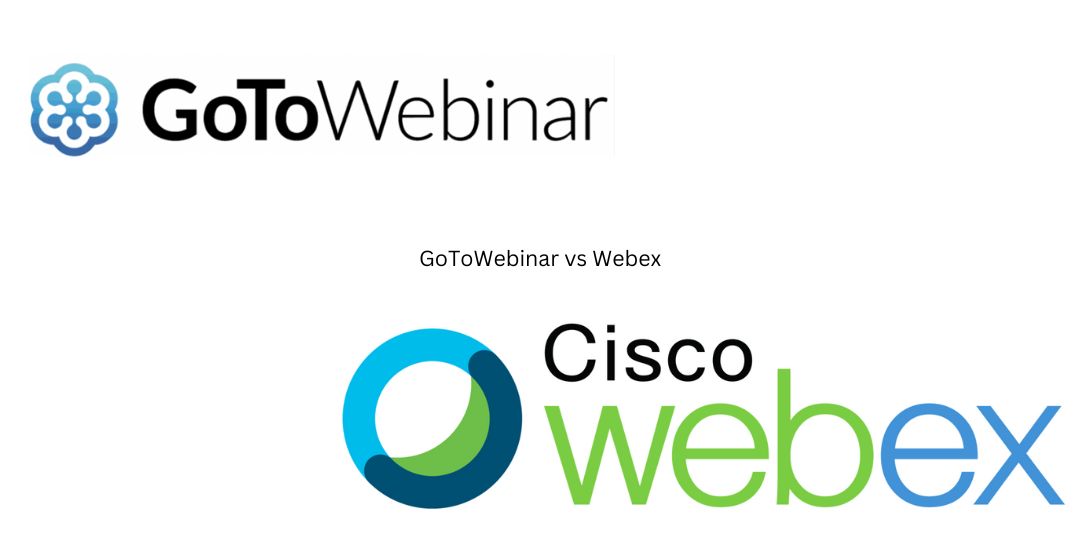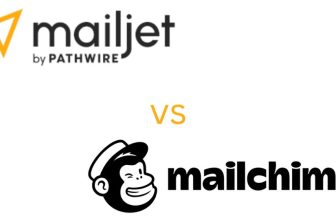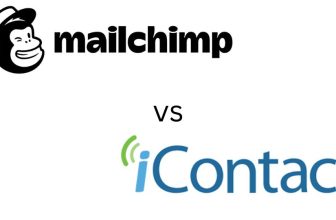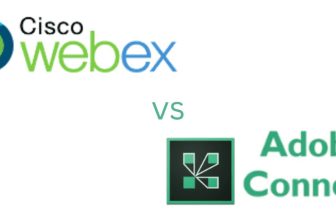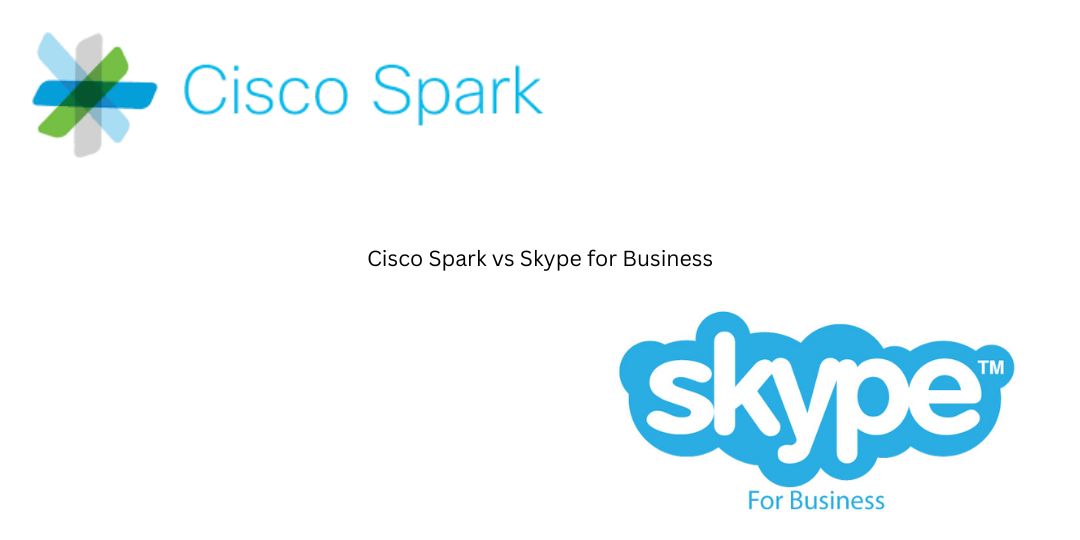
The modern workforce is fully mobile. Connections are critical for businesses, and in today’s environment, technology allows you to connect with people all over the world. As more and more teams become global and remote, the correct tools are required to function productively. Meetings need the use of several tools. With the shift in work strategy, online conferencing has become an important duty in its own right. Having said that, how about looking at a few online conferencing products that can help you with your business collaboration needs?
Skype for Business and Cisco Spark are two of the most popular video conferencing and communication applications that may function well for internet teleconferences and provide nearly identical benefits. They are intended to accommodate almost all business sizes and operate on the cloud. They’ve got their fair share of customers.
Skype vs GoToMeeting. Which One is Better?
Cloud Based Video Conferencing – Full Guide.
However, while comparing Cisco Spark versus Skype for Business, it is important to note that while both comparable offer capabilities, they also have features that are distinct from one another. They are intended for diverse use situations, and as such, each has its own set of advantages and disadvantages. With that in mind, which of these do we recommend you choose? Let’s have a look at the tools and compare them based on a few important characteristics.
Comparison of Cisco spark vs Skype for Business
Which is superior, Cisco spark or Skype? Not sure if Skype for Business or Cisco Spark is the better option for you? Not a problem! This comparison assists you in making the right selection. Examine the categories in which Skype for Business and Cisco Spark compete, as well as existing customers, market share, and category ranking. Still unsure? Compare the similarities and contrasts between Skype for Business and Cisco Spark clients in terms of industry, region, and purchasing habits.
With so many capabilities, options, and offers to consider, selecting the ideal Communications Software for your firm may be difficult. Using our review directory, on the other hand, will assist you to simplify the essential processes by displaying all critical applications in one area.
As an example, compare the features and overall scores of Cisco spark and Skype, which are 8.9 and 9.0, respectively. Similarly, you can see which product has a higher overall user satisfaction rating: 90% (Cisco spark) and 98% (Skype) to choose which software is best for your company. Purchase the service that provides the most cost-effective value rather than the program with the lowest pricing.
Cisco spark vs Skype for Business
In the domains of project collaboration, instant messaging, screen sharing, web conferencing, and video conferencing, Cisco Spark has competition from various products. Cisco Spark has 194 clients in 33 countries and holds a market share in the instant messaging sector.
Competitors in the Project Collaboration category include items like Skype for Business Cloud PBX. With 68 clients across 16 nations, Skype for Business Cloud PBX has a market share in the instant messaging sector.
- Client bases: Cisco spark vs Skype for Business
When we compare the client bases of Skype for Business and Cisco Spark, we can observe that although Cisco Spark only has 194 customers, Skype for Business has 4332. In the Web and Video Conferencing category, Cisco Spark is ranked 55th with 194 customers, while Skype for Business is ranked 13th with 4332 clients.
- Market share: Cisco spark vs Skype for Business
Skype for Business has a 0.14% market share in the Web and Video Conferencing market compared to Cisco Spark’s 0.01%. In the Market Share Ranking Index for the Web and Video Conferencing category, Skype for Business is ranked 13th whereas Cisco Spark is ranked 55th due to its greater market share coverage.
- Skype for Business vs Cisco Spark clients by location
When comparing the geographical distribution of Skype for Business and Cisco Spark subscribers, it can be seen that the former has more users in the US, UK, and Canada, while the latter has more users in the US, Australia, and France.
Comparison Table: Cisco spark vs Skype for Business
| Parameters | Cisco spark | Skype for Business |
| Definition | It is a hardware-based video conferencing system developed to meet the demands of businesses in terms of communication and collaboration. | It is a video conferencing program designed to meet the demands of 400 million professional internet users. |
| Software Development Kit | To remain competitive, it must improve the quality of its features and business. | It is a simple messaging solution that is ideal for small enterprises and start-ups. |
| Premium plan | It includes a software development kit that enables users to improve web-based apps. | It does not include a software development kit. |
| Complexity | It has an expensive premium plan. | It provides a low-cost premium plan. |
| A little difficult to utilize | Very simple to use | |
| Customer experience | Cisco Spark provides a poor customer experience. | Skype provides excellent customer service. |
| Integration | It interfaces well with a variety of systems. | It only interfaces with a few systems. |
| Available support | You can contact us through email for assistance. | You may contact us via phone, live chat, or email. |
How Do Cisco Spark and Skype for Business Compare?
When it comes to online collaboration technologies, both Cisco and Skype are market leaders, leading the way in internet communications. When it comes to video conferencing, the two platforms play corresponding yet different responsibilities. Both have seen great success, so it’s not surprising that they’ve established themselves as powerful competitors in the market.
Tools for video meetings and cooperation are quite popular among companies that are implementing work-from-home policies as well as those operating in other markets. They make it feasible to maintain contact with both staff and clients in a manner that resembles face-to-face communication.
Leading the way in offering top-notch web conferencing services is Cisco. Microsoft, however, has a strength that sets it apart from the competition. One of the things we find fascinating about Skype is how it has evolved over time, becoming one of the greatest online conferencing programs with exceptional capabilities.
However, it might not be useful to compare Cisco Spark and Skype for Business side by side. Of course, they have both comparable and distinct traits. They have developed from several angles. Cisco Spark lacks an integrated instant messaging feature and is intended for use in large-scale meetings. Skype for Business, on the other hand, started off as an instant messaging network and subsequently turned into a choice for business meetings. That would undoubtedly make them entirely distinct goods, and as a result, it could be difficult to explicitly compare the two.
From that vantage point, we believe it is important to evaluate the qualities of the two options and make a choice. Let’s examine Microsoft Skype for Business and Cisco Spark. We’ll do a comparison while taking a few crucial aspects and factors into account.
The Backstory of Businesses: Cisco spark vs Skype for Business
- Skype for Business
Knowing who created these two items can help explain the software engineers’ choices during the development process. As a result, it is a good idea to learn about the businesses that created Skype for Business and Cisco Spark in order to completely comprehend their purposes.
A group of Danish and Swedish designers created Skype in 2003, and eBay acquired it the following year. In 2009, four years later, the Canada Pension Plan Investment Board acquired Skype. In 2011, it eventually found its way to Microsoft. Although Skype and Skype for Business are two separate programs, they are sometimes mistaken. When compared to Skype for end consumers, Skype for Business is different.
- Cisco spark for Business
In the meanwhile, ActiveTouch, a firm, created Spark in 1996. The program was subsequently purchased by Cisco Systems, Inc. in 2007, 11 years after its first release. A technological corporation called Cisco is situated in the heart of Silicon Valley in California. At Enterprise Connect 2015 in Orlando, Florida, which took place at the same time as CiscoLive 2015 in Melbourne, Cisco announced the release of Spark in March.
Project Square’s commercial brand name is Spark (first announced by Cisco in November last year). Users inside and outside of an organization can collaborate as a team on a project thanks to the solution. Instead of gathering everyone physically in a room or exchanging emails, Spark is simply a messaging agent that enables users to join in virtual conference rooms and employ various forms of communication (phone, video, messaging, and content sharing) (Cisco does not have an email business to protect).
People are accustomed to speaking with one another through many media today. Communications are increasingly done on social media and through mobile devices. Although there are a variety of tools and applications accessible from app stores, users may find the workspace to be more constricting. Vendors have been working to remedy this by creating products that offer a user-friendly experience while maintaining the security of all conversations.
Overview of Skype for Business
Skype for Business enables high-quality voice and video calling in high definition. A single meeting may accommodate up to 250 persons. However, while doing video conferences, it is best to utilize a robust internet connection because Skype for Business might be choppy when using poor internet.
Skype for Business also has a chat tool that your team may use to engage with one another during the workday or anytime a face-to-face virtual conversation is not required. You may also exchange photographs, movies, papers, and other things. Because Skype for Business is owned by Microsoft, it integrates seamlessly with Office 365 and other Microsoft products.
Skype for Business provides several authorization levels for security reasons. You may assign different degrees of access to users by designating an administrator. In terms of security, Skype for Business uses AES and TLS encryption to keep your discussions with colleagues confidential.
One advantage of Skype for Business is that customers who are already familiar with Skype for Consumers do not need to learn a new user interface from the start because the two are quite similar.
Is there a difference to be made between Skype and Skype for Business?
Skype for Consumers is what most people are familiar with; it is not the same as Skype for Business. The key distinction is that Skype for Consumers is meant for usage by individuals, whilst Skype for Business is intended for use by groups. Skype for Consumers can accommodate up to 25 users, while Skype for Business can support up to 250 users.
Another distinction is the incorporation of apps. Skype for Business may be integrated more deeply with Microsoft Word, Microsoft Excel, Microsoft PowerPoint, Microsoft Outlook, and other Microsoft apps. The highlight of Skype for Business is that it combines the functionality of Skype for Consumers with Microsoft Lync, a business communication program.
This is significant since Microsoft Lync has sophisticated capabilities such as phone call routing and the ability to know who is online, free, busy, or in a meeting. This is beneficial for businesses that do remote work. Knowing the status of employees at a physical workplace is also beneficial for businesses. You can save time by not going to the desk or office of the person you are searching for — whether that person is in the building or in another branch — and instead contacting someone who you know is available. Integrating these two products into Skype for Business provides the program with essential conferencing, communication, and remote work functions.
Overview of Cisco Spark for Business
Cisco Spark allows you to utilize either the on-premise version with a desktop or mobile app, or the cloud version with a web browser. Spark provides important conferencing capabilities such as Speaker View, which displays the face of whoever is speaking on the screen. Your calls can also be recorded as an MP4A audio file. You have the option of saving the file locally on your computer, in the cloud, or emailing it to a customer or colleague.
Spark provides collaboration capabilities such as a Whiteboard, which allows participants to post ideas on the screen during the conference. It’s called a Whiteboard because, like an actual whiteboard, you can draw and write on it. Everyone engaged may then see the drawings and writings. Having collaboration features built into the product is advantageous since you will not need to purchase additional collaboration software.
When you utilize Spark, you obtain a computer-based IP address that you may use for video calling. Spark can accommodate up to 8 people per session. You can raise the number, but the price will rise as well. Cisco provides a distinct solution for running webinars. Cisco Spark is the company’s response to enterprises that require an always-on work environment, even if employees are not in the same place. Consider it a massive virtual workplace.
When you arrive at work, you are surrounded by your coworkers, which means you can always chat to them, listen to them, ask questions, and cooperate on the fly without having to schedule a meeting. Spark does the same function, but in a virtual environment. There are virtual “rooms” where team members may engage in the open flow of information sharing. Anything you choose to share or say is available to everyone in your “room” on any device.
Meetings may begin at any time, with team members establishing and joining them at their leisure. Any booked meeting displays in the sidebar, and you can set notifications to ensure you don’t miss anything crucial. Messaging options abound, including the ability to share both traditional and direct messages in the “room.” Sending files to the “room” also allows for file sharing..
Spark also interfaces with third-party systems, making file sharing and other productivity alternatives easier than before. For example, Google Docs connection enables simple sharing and collaboration on GDocs. Perhaps most importantly, Spark honors its corporate origins by providing end-to-end messaging encryption, secure search within the app, and secure meetings that are limited to certain “rooms.”
Networking Prerequisites: Cisco spark vs Skype for Business
This will be determined by your familiarity with any of the items. Many businesses and organizations are well aware that Microsoft Business apps are used. Given this, we anticipate a preference for Skype for Business if your partnerships are handled by Microsoft. If you have Cisco infrastructure, however, you are more likely to favor Spark.
Finally, precise integration and management are critical. Your past will have an impact on your selection. If you work in networking, you will choose the Cisco product. If you work in information technology, Skype for Business is one of the best options. Cisco provides great interoperability with Spark. Skype for Business may not have the same level of compatibility.
Connection Option: Cisco spark vs Skype for Business
One of the most prevalent ways to communicate with your team is through video communication. However, if you want to engage in active video conversation, one of the most important factors to consider is ease of access.
Spark provides an unmatched range of dial-in and dial-out choices. You may also use a computer-based IP address for video calling. In reality, both of these features are available on-premises as well as in the cloud. Skype for Business does provide a telephone calling option, but it is not included in your plan. You will have to choose it separately, and there may be additional costs and license requirements. Microsoft telephone services can be used with cloud-based Skype for Business. If you use on-premises Skype for Business, you will have access to telephone via business SIP services.
Total Number of Participants: Cisco spark vs Skype for Business
This is another important factor to consider while choosing between the two rival collaboration tools. The amount of users on your team should have a greater impact on your decision.
Spark allows for up to 8 people per meeting at any given moment. You will have to pay extra if you want to add additional attendees. This should not be the ideal situation in the case of Skype for Business. The fundamental limit for a single meeting would be 250 people. At any given moment, the function can accommodate up to 10,000 participants. If you want to use Spark for webinars, you must purchase another package.
Utilization Ease: Cisco spark vs Skype for Business
This will be determined by your familiarity with each of the goods. Skype is fairly simple to use due to your familiarity with it. If you utilize Microsoft products, you can use Skype for Business to improve your experience. Because of its extensive interaction with Microsoft Services, it is one of the finest solutions.
The same should ideally apply to Spark. If you are familiar with Cisco products, you will be able to operate effectively using Spark. Before deciding on one of the goods, consider how comfortable you are with it.
Mobile Compatibility: Cisco spark vs Skype for Business
With an emphasis on mobile communication, it is critical to examine the mobile phone compatibility of any product. Both solutions have mobile and browse-friendly alternatives to meet your needs.
However, when it comes to security considerations, Microsoft outperforms Spark. Not that Spark does not provide security features, but Microsoft does.
The Difference Between Spark and Skype for Business
Listing the tools’ Pros and Cons might assist us grasp the strengths and shortcomings of both options. Let us examine the advantages and disadvantages of each separately.
A Summary of the Pros and Cons of Skype for Business
Pros
- Outlook and Outlook Calendar connection is excellent.
- Capability to contact people outside of your corporation.
- Call recording feature is supported
- Interactive Web Conferencing.
Cons
- When your network connectivity is poor, you will experience lag.
- Although not a problem with SFB, we believe personal face-to-face encounters might be more successful.
- You may prefer chat over video calling or face-to-face communication. SFB, on the other hand, has a strong use case in today’s internationally scattered teams.
A Summary of the Pros and Cons of Cisco Spark for Business
Pros
- Participants in an online meeting can use numerous devices to participate.
- During a call, create and share a whiteboard.
- Dialing in and dialing out
- Members can attend the conference using a variety of devices.
- They can work on their mobile phones or on their desktops.
- The whiteboard tool allows attendees to express their thoughts throughout the discussion.
Cons
- The integration with Google Calendar is poor.
- There was no simple way to record the conference.
Spark, for all its virtues, is nevertheless quite constrained in several ways. For example, actual meeting elements aren’t covered in full. Individual document sharing is not possible without revealing your full screen, and there is no meeting recording or participant management.
That is why Cisco separates the two systems. Spark shines where WebEx fails, and vice versa.
Which Software Is the Best Fit for Your Team: Cisco spark vs Skype for Business
To summarize the Cisco Spark vs Skype for Business comparison, Spark is designed for large-scale meetings like conferences and webinars. There is no built-in Instant Messaging functionality in the program. Meanwhile, Skype for Business began as an Instant Messaging tool and only subsequently evolved into a platform for large-scale meetings. Because of this differentiation, they are distinct objects.
All things considered, making an explicit link between the two factors may be difficult, and it all comes down to purpose and development decisions. This is why getting to know the firm ahead of time is essential. When it comes to businesses, the ideal application to employ depends on the type, scope, tools you already use, and system needs. It is critical to select an application that works with your process rather than against it.
Another factor to consider when comparing Cisco Spark versus Skype for Business is the software that your company already employs. Microsoft Business apps are well-known in the business sector since they are used by many firms for their workflow. Companies in that category are more likely to use Skype for Business as a text, voice, and video communication tool.
Companies who already incorporate Cisco infrastructure or use other Cisco software for day-to-day operations, on the other hand, will be more tempted to pick Cisco Spark for teleconferencing and networking due to its compatibility with other Cisco products.

